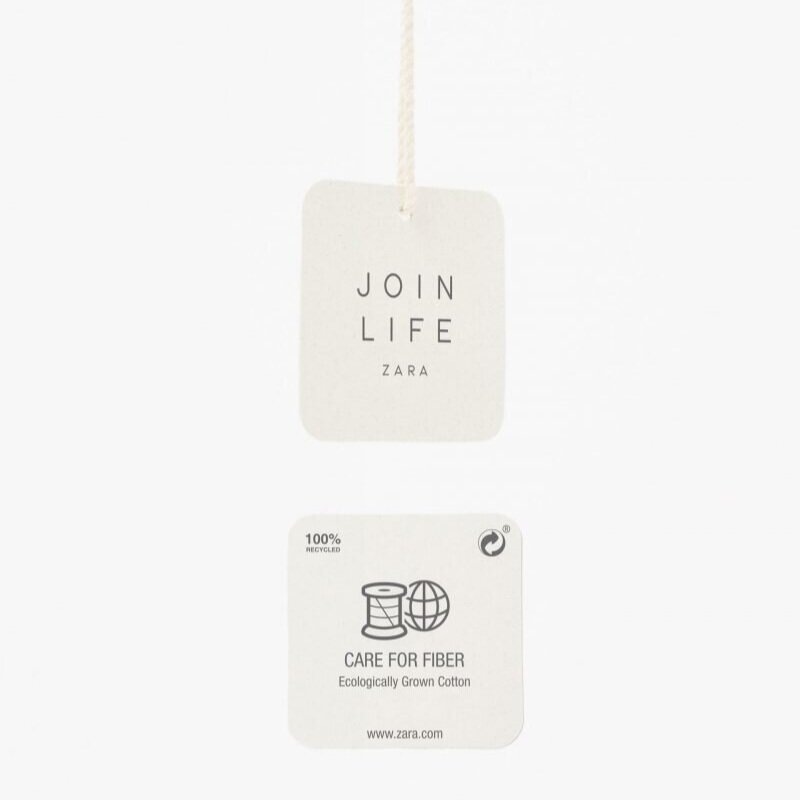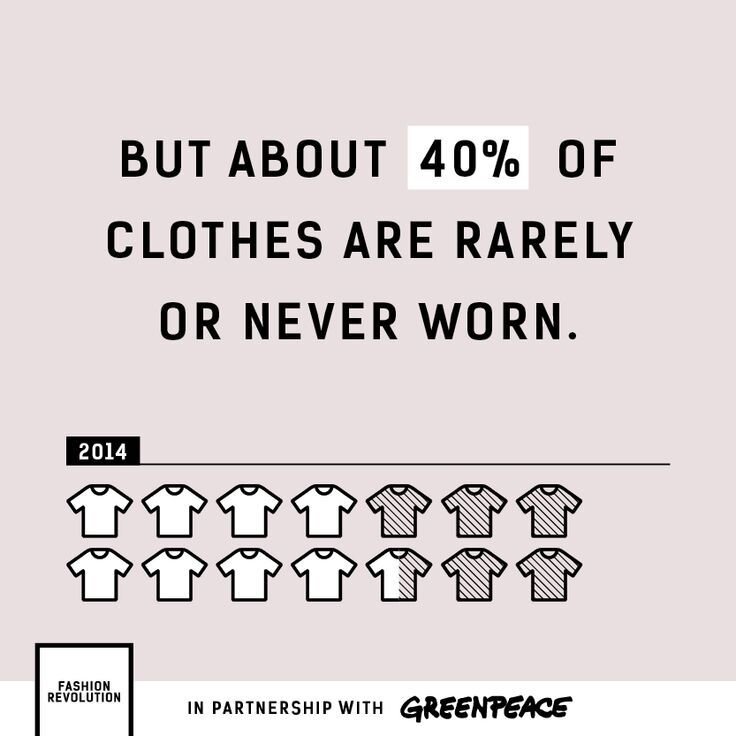What is Greenwashing? And How Do You Identify Fashion Brands That Use It?
Greenwashing has become of those fashion industry buzzwords that are thrown around like it’s NBD. But if you aren’t an expert in sustainable fashion (though clearly, you’re well on your way), you may be left a bit confused about what a podcast host or magazine editor is talking about.
Because such a wide range of companies successfully employ these suggestive and sometimes even manipulative marketing tactics, it can be challenging to identify which fashion brands use greenwashing and which brands are legitimately sustainable. To help you shop smarter, we’re answering two of the most commonly-asked questions about the hotly-debated topic: What is greenwashing? And how do I identify fashion brands that use it?
Before we begin, may we offer a quick reminder: Sustainability is a journey and in today’s day and age, a difficult one. Just because a brand you love isn’t entirely sustainable, it doesn’t automatically mean they’re “bad” or that you should feel bad for shopping there. Instead, understanding the truth about the sustainability and ethics of a fashion brand helps you make more informed purchase decisions that align with your personal values. Becoming 100% sustainable, whether that be as a fashion brand or as a consumer, is no easy feat and everybody is at a different point in the journey. All we ask for is honesty and transparency about where you’re at and where you’re headed.
What is greenwashing?
In fashion, greenwashing refers to the practice of falsely promoting a brand’s environmental efforts without the implementation of business practices that back up these claims. The practice typically entails providing customers with misleading information about the sustainability of a product through deceitful marketing and broad, unsubstantiated claims about their sourcing, supply chain, and environmental impact.
These manipulative marketing techniques benefit the company by helping them appear more sustainable than they actually are. As a result, they attract environmentally-conscious consumers while maximizing profits by using unethical business practices and unsustainable production methods behind the scenes.
Fashion isn’t the only industry affected by greenwashing. It’s pervasive in everything from agriculture to gasoline to personal care products. In fact, the term greenwashing was coined in 1986 by environmentalist Jay Westerveld in an essay claiming the hotel industry falsely promoted reusing towels as part of a larger environmental strategy when it was actually done to cut costs on laundry.
How do companies get away with greenwashing?
Fashion brands that use greenwashing schemes exploit the fact that we’ve yet to create a universal standard for sustainability. Worldwide, there’s an unnerving lack of government legislation regulating things like sourcing and supply chains. Vague terms like green, ethical, and eco-friendly have no legal meaning so companies can’t be held accountable for falsely marketing themselves as such.
Additionally, a lack of consumer awareness is to blame. If you’re unaware that a brand is using shady marketing tactics, it’s easy to believe the messaging on the tag. Greenwashing schemes are highly effective, so even those who are aware of the problem can easily fall prey. The average consumer is no match for a fast fashion company’s multi-million dollar marketing campaigns.
How to identify greenwashing in fashion:
Fast fashion companies are incredibly effective marketers, so it can be challenging at first to spot when a fashion brand is using greenwashing tactics. But don’t worry. Once you know how to identify greenwashing in fashion, you’ll become quite skilled at seeing through companies’ BS.
Vague Sustainability Claims
One of the most common ways fashion brands use greenwashing is by making vague, unsubstantiated claims about their sustainability efforts or the environmental impact of a product. Usually, these companies provide little to no information to verify these claims.
The most obvious example of this greenwashing tactic is when a company describes a product or collection using sustainable fashion buzzwords like green, eco-friendly, or conci0us without offering much evidence to prove it. More often than not, the brand deems these products are “sustainable” without any certifications.
By contrast, sustainable fashion brands will offer precise, measurable information about their sustainability efforts. On a brand’s About Page, look for certifications from standards organizations (such as Global Organic Textile Standard, OEKO-TEX, and ECOCERT) and partnerships with sustainability-focused NGOs. Oftentimes, they’ll also be transparent about their shortfalls or areas they’re working on.
Lack of Transparency
An even bigger red flag than making broad sustainability claims is making none whatsoever. If after a few minutes of searching a brand’s site (and/or its parent company’s), you still haven’t found any information about where the products are sourced, how they’re produced, or who is making them, then ~Randy Jackson voice~ that’s gonna be a no from me dawg.
Reformation’s RefScale tracks their environmental footprint, including water, waste and, CO2 emissions.
Sustainable fashion companies will be transparent about their sourcing, supply chains, and environmental impact. Without doing much digging you should be able to determine where the products are being made, what manufacturers are being employed, and what sustainable materials are being used. The more specific the information provided, the better.
Green or Eco-Conscious Collections
Sorry to tell you, but the sustainable capsule collections at fast fashion brands like Zara, MANGO, and even H&M aren’t all that sustainable… yet. Most rely on sweeping sustainability claims, nature-focused marketing campaigns, and organic fabrics to trick shoppers into believing the items are truly sustainable. Even if these items are truly eco-friendly, what does that say about the other 90% of the garments they produce.
Zara’s Join Life uses greenwashing tactics to convince shoppers their garments are more sustainable than they actually are.
By design, the fast fashion model is unsustainable. It relies on pushing high volumes of trend-driven garments made using cheap labor and materials to maximize profits. Most “sustainable” collections focus solely on organic or recycled textiles and provide little to no information about other key aspects of sustainability like sourcing and labor.
Though these small collections certainly can’t negate the companies’ overall environmental impacts, they do mark the progress they’re making towards authentic sustainability. Plus, they allow the fast fashion industry to test out new textiles and sustainable retail models.
Tags With Sustainability Buzzwords
When the average shopper pulls a garment from the rack, they judge its sustainability based on the information available on the tag. Fast fashion relies heavily on impulse purchases, and that satisfying feeling that comes from buying something eco-friendly makes a great incentive to shop.
Zara’s Join Life tags claim they use “ecologically grown cotton” but offer no certifications to back up these claims.
Madewell’s Fair Trade jeans boast the Fair Trade Certified seal along with further info about the impact of the product.
By using buzzwords like green, eco-friendly, or recycled, companies trick consumers into believing the products they’re purchasing are actually good for the planet. By contrast, sustainable fashion brands will label their tags with legitimate certifications such as Fair Trade Certified, Cradle to Cradle, and Certified B-Corp.
Using Misleading Natural Materials
Seemingly natural materials like viscose, lyocell, rayon, and vegan leather provide fashion brands with another loophole. While these semi-synthetic textiles seem great in comparison to polyester, they are far from eco-friendly.
While natural fibers like viscose, lyocell, and rayon may begin as trees or bamboo, sourcing is far from forest-friendly. Many farmers use synthetic pesticides and fertilizers to speed up production. According to Canopy, 150 million trees are logged each year for viscose production. Even more alarmingly, fabric production wastes about 70% of the tree. The first step in solving this problem is creating partnerships between clothing brands and forest conservation organizations to employ sustainable forestry practices.
Though a fabric may be label natural or vegan, it can still require an alarming amount of chemicals, water, and energy to produce. Most vegan leather alternatives are made from synthetic, petroleum-based materials like polyurethane and polyvinyl chloride that may be more harmful to the planet than actual leather.
And remember, just because a garment uses organic cotton or recycled polyester, it doesn’t guarantee it was made using fair labor practices.
Discounts for Textile Recycling
To help themselves appear more sustainable, an increasing number of fast fashion brands are starting to offer in-store drop-off sites for clothing donation and textile recycling. As a thank you, customers who donate receive a discount on a future purchase.
H&M’s Garment Collecting program uses greenwashing to convince shoppers to purchase the latest trends after donating last season’s unwanted styles.
While it’s great that these donation sites defer these items from a landfill, their true purpose is to convince you to buy more. Retailers know that customers feel good after donating and want to take advantage of it. What better way to pat yourself on the back for your good deed than a little retail therapy? After all, you’re already in the store.
What fashion brands use greenwashing?
Though all sorts of companies use greenwashing, most are fast fashion brands. Let’s look at a few examples using fast fashion brands you’re probably familiar with:
H&M
Though H&M’s sustainability efforts began as greenwashing practices, they’ve evolved to be a central pillar of the company’s brand identity. After the success of their sustainable capsule collections, H&M set ambitious sustainability goals like using 100% recycled or sustainably sourced materials by 2030 and becoming climate positive by 2040.
While H&M is making legitimate progress towards sustainability, their business model still relies on low prices and short trend cycles. Needless to say, the Swedish fashion giant still has a long way to go.
Zara
Hate to break it to you, but Zara’s Join Life Collection is all a big greenwashing lie. According to Business of Fashion, Zara releases 500 new designs a week, totaling 20,000 per year. Though the retailer does show some progress towards sustainability, its entire business model goes against these sustainability goals.
An NPR article calling out Zara’s greenwashing efforts summarizes it perfectly: “When a business is built on a fast turnover of styles, making those products still swallows a lot of energy, regardless of whether it's using organic cotton or selling products in more eco-efficient stores.”
Boohoo
Popular UK fashion company Boohoo is the latest fast fashion brand under fire for greenwashing. Much to the delight of PETA, Boohoo announced in early 2019 they planned to ban the use of wool. Only hours later, the company backtracked, stating that it would continue using wool.
"Boohoo continues to assess all options as part of its ongoing commitment to a more sustainable future…We are committed to ensuring the wool used in our supply chain comes from good husbandry and meets high levels of animal welfare, and will continue to use wool as a sustainable material," Boohoo wrote in a revised statement.
Though the wool ban pleased animal activists, it was falsely portrayed as being environmentally friendly. Wool is one of the most sustainable fabrics out there, unlike petroleum-based yarns like acrylic. Additionally, most of the company’s ‘wool’ products were already made using synthetic alternatives, so the ban wouldn’t have made much of an impact anyway.








